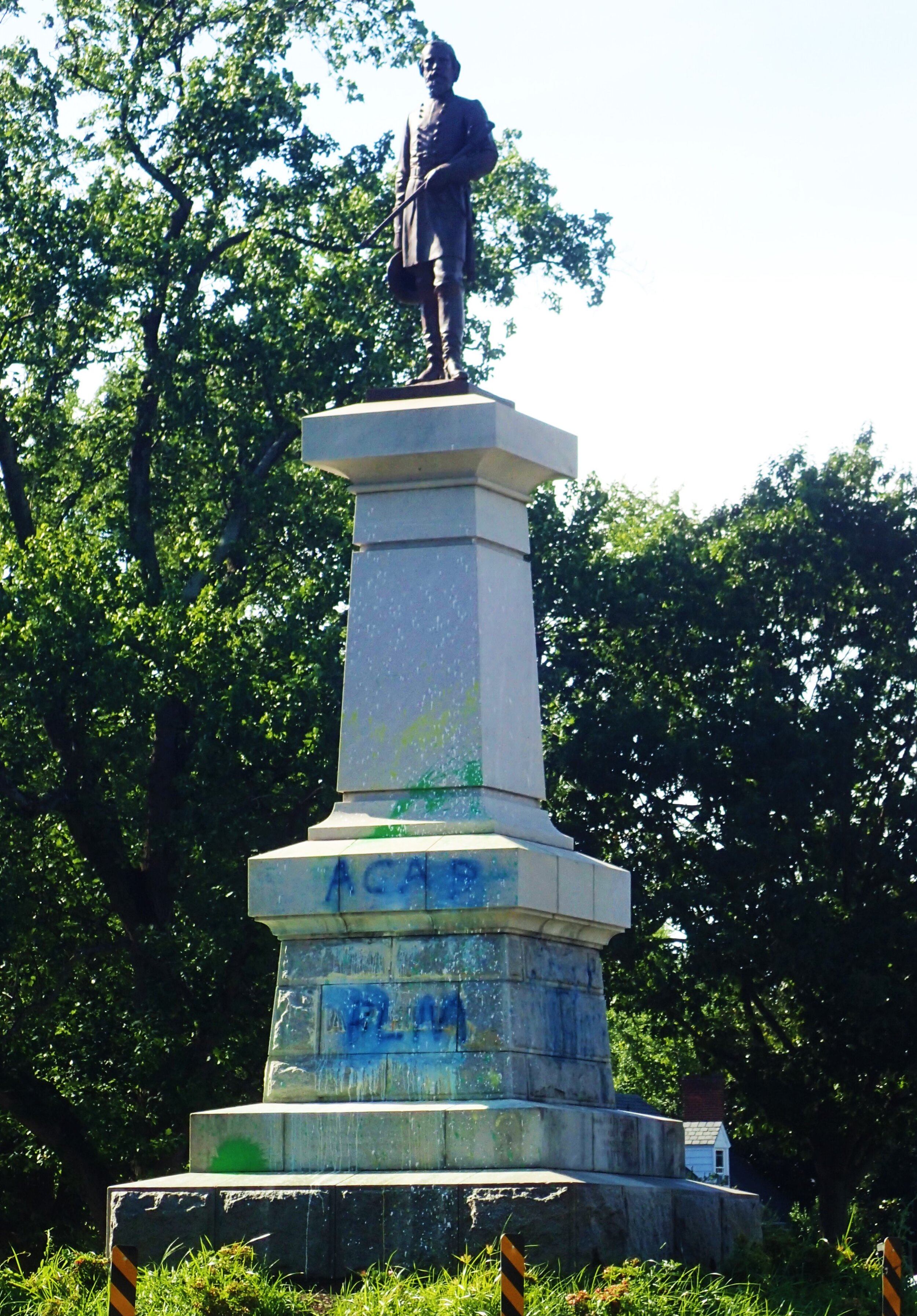A.P. Hill: Last Confederate Standing
by Charles McGuigan 10.2021
The AP Hill statue at the intersection of Hermitage Rd and Laburnum Ave.
After death most of us are buried just one time. That wasn’t the case though for Confederate General Ambrose Powell Hill. To date he’s been buried on three separate occasions. And fairly soon he’ll be re-interred once again.
It all started back in 1865 with the fall of Petersburg. On April 2, just seven days before Lee’s surrender at Appomattox, Union troops broke through the Confederate lines. A Union soldier shot Hill. The single bullet severed the general’s left thumb, plunged through his chest, and exited above his right shoulder blade. He died almost instantly. Interesting to note: Hill, a week before he was killed, said he had no desire to live to see the collapse of the Confederacy. A dying wish, if ever there was one.
Hill was hastily buried in a family graveyard outside of Richmond on the south bank of the James River just off Cherokee Road. Here’s the funny thing: he was buried standing up, something he had requested well before his death.
After mouldering in the shrink-swell soil of Chesterfield County for two years, gravediggers grabbed their spades, shovels and mattocks, and dug him up, then carted him over to Hollywood Cemetery where he was interred in among other Confederate officers.
Then, in 1891, Lewis Ginter, who had served as a Confederate major, spearheaded the relocation of Hill’s remains once again. This time Hill was buried at the juncture of Hermitage Road and Laburnum Avenue near the neighborhoods Ginter was at the time just laying out. By then there wasn’t much left of Hill, just a few bones and some tattered cloth. On top of the burial mound Ginter had a statue of Hill erected.
With the removal of the Lee Monument last month, this is now the last statue commemorating a Confederate left in the city of Richmond. And the rotary it rises from is considered one of the most dangerous intersections in the city.
The monument to A.P. Hill, along with his remains, will soon be removed.
“We were waiting on the family to decide where they want the remains to go,” says Third District Councilwoman Ann-Frances Lambert. “So the family has decided that they’re going to take the remains to Culpeper, Virginia.”
Once the statue finds a home, Councilwoman Lambert is hoping to change the entire nature of that intersection. “We want to make sure we put the right thing there, and we know a roundabout is not the answer,” she says. “I want a crisscross intersection there, where you can cross not just from adjacent corners, but in diagonals, so you have people crossing the street from opposite corners.”
Councilwoman Lambert also wants to see the students involved with creating artwork for this intersection. “It would be wonderful to have some bright colors on the crosswalk for that intersection,” she says. “I would love for it to say Black Lives Matter.”
And at the end of it all, Councilwoman Lambert would like to see a large community celebration held on the spot. “I want to have a culminating block party where we’re bridging the neighborhoods together,” she says. “We finally can celebrate a new intersection and hopefully reduce the number of accidents there. Speeding is a huge issue there, and that’s something we’re definitely looking to address with these ARP (American Rescue Plan) funds.”

